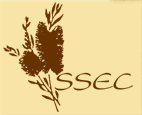The Village Grows Up |
Commercial Enterprises
The first store opened in Kurnell in 1918 on the corner of Polo and Cook Streets. The proprietors, Bert and Ann Cox, erected a hessian chaff bag shelter painted with whitewash to keep the water out and they put in it a trestle table as the counter. |
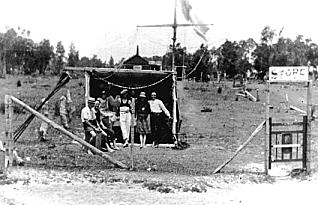
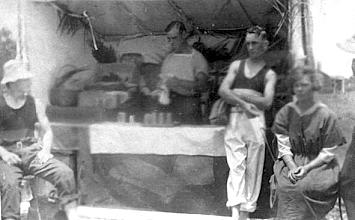 |
| Mr and Mrs Palmer had let a room or two of their home as a boarding establishment since 1912. In 1919 they converted the front rooms of their house to form the first solid Kurnell shop. It incorporated a Post Office. |
 |
| Following the tragic drowning of Harry Palmer in Botany Bay in 1920, Mrs Jenny Cox bought the Palmer Store and Post Office from his widow. Adjoining the Cox family home on Bonna Point was a separate corrugated iron building that they used as the master bedroom. Because of their concern for the education of the children, it was in this room that they began to teach their own and other local children. After they had purchased the Palmer Store, the Coxes loaded this structure onto a four-wheeled dray, brought it down to the shop and attached it to the existing building. This became the Post Office section, creating an 'L' shaped building. |
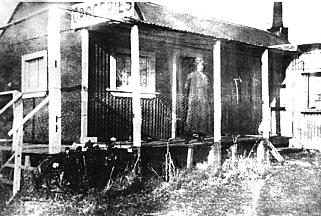
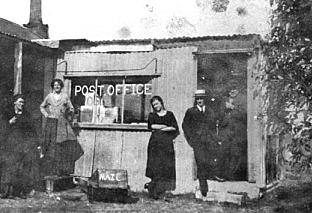
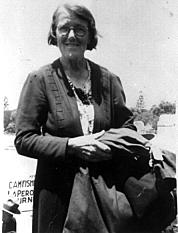 |
| Jack Honnor was a builder and entrepreneur. With his wife and children he moved to Kurnell about 1916. The Honnors bought several blocks of land between Prince Charles Parade and Torres Street. The northern end of Torres Street is now part of Captain Cook Drive. There was a vacant block of land between their home, 'Gymea', and their grocery shop. The shop was gutted by fire in the 1940s. Honnor made the bricks he used to build his houses, his shop, Bob Mackie's Maritime Museum and the Methodist Church. |
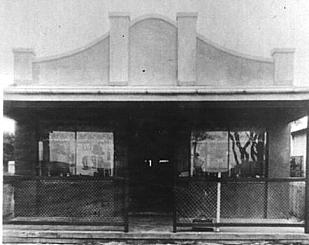 |
Mr Pillinger had a small paper shop and general store where Sydney Diver City Guided Underwater Tours now stands. It was called the corner shop, not because it was on a corner, but because it was then the shop closest to the corner.
Mr Stillwell, who had the dairy on the ocean side of the refinery site, also had a market garden. He sold his produce to the people of Kurnell from his horse-drawn dray.
Mrs Guy's shop and her function hall, known as Guy's Hall, stood between Dampier Street and Balboa Street, facing the bay. She catered to the villagers' need for recreation, showing movies, and holding dances on most weekends and holidays. Ever enterprising, she installed an ice-cream making machine to the delight of the children. Guy's Hall was demolished in the 1970s, but the 'dunny' (outhouse) was retained as a garden shed.
During the late 1940s Rube Chater, the builder who built the present Marton Hall, had a bake-house on Prince Charles Parade.
Gus Sprague was the son of Mrs Guy. He built a weatherboard general store on the southern side of Polo Street on the bay side of the park entrance. The shop was sold to Mr Cortese, who later sold it to Robert Emslie. In 1947 Emslie built a semi-circular façade around the old edifice, using bricks made by Ivy Martin and her husband in their backyard. He demolished the inside of the original building and refurbished it. The building was then named Kurnella Café. |
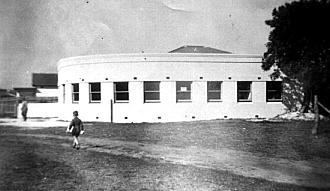 |
| The Café was a general store with a restaurant and petrol pumps. The Blundells managed the business with Jessie Blundell and Ethel Emslie serving in the shop and cooking for the restaurant. Celestine and Harold Stevens baked the pies sold there. The Kurnella Café had the first liquor licence in Kurnell and so was able to serve liquor with meals. |
 |
| George Blundell, who operated the service station in conjunction with the business, did most of the deliveries and collecting of supplies, first with an Austin A70 utility, then with an old ex-army short wheelbase blitz wagon he had bought in 1947. He kept the decrepit old blitz for about a year before buying a bigger one from the army disposal yards at Tempe. It was almost brand new, with an army canopy and high sides, which he removed in order to convert to an eight-foot by eighteen-foot flatbed tray. |
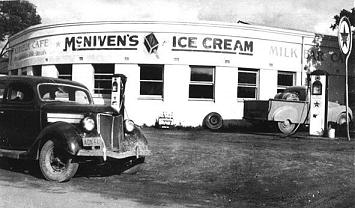 |
| In 1951 Blundell operated a sawmill in the oak forest on his father-in-law's land between Stillwell's dairy and Solander Street. |
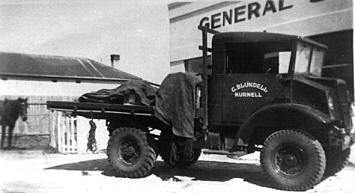 |
There was still no water or electricity to Kurnell, so Robert Emslie installed his own diesel-engine generating plant in a separate brick building. It operated 24 hours a day for seven days a week till the power came through in 1952. It was used to run the refrigeration, lighting and other power needs in the shop. In 1959 Emslie sold the business to Alan Columbo who continued the restaurant for a while as 'Cook's Kitchen' before demolishing the building when clientele fell off. He retained the liquor licence, which he transferred to a new liquor shop. The land is still a vacant block.
Following the establishment of the Caltex refinery at Kurnell, George Blundell was the first manager of the first and only service station in Kurnell. It opened in 1954. George kept the garage until October 1956 when he sold out to Maurice Appleby. |
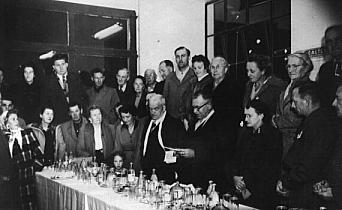
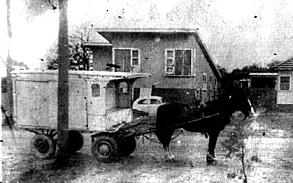
 |
| top of page |
